In this article you will find simple and clear answers to the following questions about growing currants:
- When is the best time to plant and replant currants?
- Where to plant currants?
- When to prune currants?
- When and what to feed currants?
- How to water the crop?
- Why do currant leaves dry out?
- Why do currant leaves turn yellow?
- Why do the leaves turn red?
- Why do currants fall off?
- Why do currants dry out?
- Why don't currants bear fruit?
When is the best time to plant and replant currants?
All berry bushes, including currants, are best planted in the fall. The most favorable time in the middle zone, Siberia and the north is from the end of August to the end of September, in the southern regions - in October. At this time, the weather is no longer hot, the roots are developing well, and the bush has time to take root and get stronger before the cold weather.
Currants stop growing at a temperature of 6-7°C, so they need to be planted in such a way that they have time to take root before frost. Rooting takes approximately 2 weeks. When planting, you need to cut off all the shoots, leaving no more than 3 buds on them, so that the crown does not develop to the detriment of the roots. The bush must be planted obliquely, covering the 3 lower buds with soil.
It is also better to plant rooted cuttings in a permanent place in the fall. In the future, more powerful bushes grow from them than during spring planting.
It is also better to replant currants in the fall. The root system recovers faster during autumn transplantation than when transplanting at any other time. Spring transplantation of currants is unacceptable. Its sap flow begins very early and the bushes, while simultaneously trying to take root and begin the growing season, may die. And if they don’t die, they will be sick for a long time, which will affect the quantity and quality of the harvest.
If there is a need to quickly replant currants, then this should be done in the second half of summer, but not in spring.
Where to plant currants
Currants prefer bright sunny places, but grow well in partial shade.In the south, it is even preferable to plant it in places with light shade. In dense shade, where sun exposure is less than 7 hours a day, black currants will not grow, red currants can grow, but will not bear fruit.
The shrub loves fertile soil, but tolerates poor podzolic soils and peat bogs quite well. The culture tolerates acidic soils well. For black soil, a soil pH of 4.5-5.5 is suitable, red soil is more stable and can grow at a pH from 4.5 to 7. By the way, black currants grow poorly on chernozems not because they are too fertile (this is just good for the crop ), but because an alkaline or even neutral reaction of the soil is unacceptable for it. Red currants are less demanding in this regard and therefore more common.
If water stagnates on the site or the groundwater level is high, then the most elevated places are chosen for planting bushes and grown on high ridges or embankments.
The crop is usually planted along the fence, along the boundaries of the site, allocating less cultivated land for it. And she feels good there.
When to prune currants
The best time for pruning is autumn, when the temperature is no higher than 6-8°C. In the middle zone this is the second half of October. In early autumn, pruning is extremely undesirable, since in this case the crop forms new young growth on the branches. The wood of young branches does not have time to ripen and goes into winter still green. This growth is completely destroyed in winter. If you prune the bushes very late, just before the cold weather, the wounds will not have time to heal and frostbite will occur on the wood.
In both cases, the bush will have to be pruned again in the spring. And the freezing of wood significantly weakens the bushes.
You can prune currants in the spring, but the main thing here is not to waste time. If the shrub has already begun its growing season, pruning is undesirable, although possible.
After flowering, weak and dried branches become very visible, which also need to be cut out. In general, if there is a need, the crop can be pruned within reasonable limits throughout the first half of summer. But from mid-July all pruning is stopped.
When and what to feed currants
Black currants, as a rule, are fed 2-3 times per season, red currants 1-2 times. When and what to feed currants largely depends on the soil on which it grows. In the first half of summer, the crop consumes the greatest amount of nutrients.
- It is best to feed currants with organic fertilizers or alternately with organic and mineral water. When using mineral fertilizers alone, the bushes will always have at least powdery mildew and aphids.
- The main fertilizers are applied in the fall. On poor soils for bushes up to 3 years old, apply per 1 m2: rotted manure, humus or compost 6-8 kg, double superphosphate 100 g. For bushes older than 3 years, use 8-10 kg of organic matter and 100 g double superphosphate. On fertile soils, organic matter is added every 2-3 years.
- In the spring, during the period of leaf blossoming, poor soils are fertilized with liquid organic matter (it is better to use humates or herbal infusion). This fertilizing is not carried out on chernozems.
- During the period of intensive growth of ovaries, the bushes are sprayed with any microfertilizer, and 15 g of potassium sulfate is added to the soil. You can water the currants again with the infusion of the herb; the nitrogen contained in it will not accumulate in the berries, since it will be used long before the harvest ripens.
- The next feeding is done after picking the berries: add 2 tbsp.spoons of superphosphate and 15 g of potassium sulfate. If the soil is very acidic, then water the bushes with lime milk once every 2 years.
Those who grow crops for sale use intensive cultivation technology. According to it, intensive fertilizing with nitrogen is used, but mineral fertilizers are applied in half with organic matter. In early spring, add compost, herbal infusion or urea. During the flowering period, the shrub is sprayed with any nitrogen fertilizer. Immediately after picking the berries, watering is carried out with humates or herbal infusion. Along with nitrogen fertilizers, do not forget to add other elements.
All fertilizers are applied along the perimeter of the crown, and not at the root.
How to water currants
Watering is carried out depending on the weather. If the summer is rainy, then there is no need to water the currants. If the weather is hot and there has been no precipitation for more than 7 days, then watering is carried out 1-2 times a week. 3-4 buckets of water are poured under each bush.
During dry autumn, watering is carried out weekly. The water consumption rate is 20 liters per bush. As the temperature drops, the interval between watering increases to 12-18 days.
2-3 weeks before the onset of frost, water-recharging watering must be done. Watering norm is 40-50 liters per bush.
Why do currant leaves dry out?
The most common reason for drying currant leaves - this is the lack of watering during prolonged dry weather. Due to lack of water, the leaves become lighter, droop and dry out. You should water the bush, then it will immediately come to life and new young leaves will appear instead of dried ones.
Another reason for drying leaves There is glass damage on currants. The caterpillar eats away the core of the shoots, which stop growing and dry out.The leaves begin to dry out from the top of the shoot and as the caterpillar moves through the core, they dry lower and lower. When cutting a damaged branch, the path along which the caterpillar moved is visible in its center.
To eliminate the cause, the shoot is cut back to healthy wood, when there is no more passage in the center of the branch. If desired, you can find the pest itself in the cut branch. Sometimes a shoot has to be cut down to the base because it is completely damaged. Glasswort is very dangerous; if it is in large numbers, it can destroy a bush. Therefore, all damaged branches are cut out and burned. To catch butterflies, baits with blackcurrant jam are used.
Cercospora or brown spot - another reason for drying leaves. This is a fungal disease that appears in mid-summer. Brown spots with a light center and a brown rim appear on the leaves, which then merge. When the process is started, the leaves lose color, dry out and fall off. To combat the disease at an early stage, biofungicides (Fitosporin, Gamair) are used; in case of a complete picture, copper preparations (CHOM, Bordeaux mixture) or systemic fungicides (Skor).
Another disease is anthracnose, causes leaves to dry out and fall off, especially on red and white currants. This is also a fungal disease; on the leaves it appears as light brown spots, which later merge, affecting most of the leaf plate. The leaves curl up, dry out and fall off. Red currants may lose all their leaves by the end of summer. When signs of disease appear, the crop is sprayed with preparations containing copper.
Leaves dry out when they are affected by any type of rust.. To combat the disease at the initial stage, plants are sprayed with Fitosporin. Copper preparations are used for advanced stages, as well as for the prevention of damage to shrubs.
Currant leaves may dry out due to excess chlorine in the soil, when the crop is fed with fertilizers containing this element. Accumulating in the leaves, it causes them to die. The edges of the leaf blade dry out, there is a clear boundary between the damaged and healthy tissue, and the leaves become light green. In very hot weather, necrosis may appear in the center of the leaf.
The damage is more pronounced on sandy soils. Nitrogen prevents the absorption of chlorine by the roots, so to prevent further damage, the shrub is fed with nitrogen (ammonium nitrate, urea). Fertilizing is effective only if the fertilizer quickly reaches the sucking roots, so after applying nitrogen fertilizers, abundant watering is carried out.
Why do currant leaves turn yellow?
1. If the leaves turn yellow on a young seedling that was planted in the spring, this indicates too early planting. Currants are planted when the temperature is at least 18°C. The leaves turned yellow because the awakened and actively growing roots fell into the cold soil and became hypothermic. To correct the situation, the seedlings are fed with a phosphorus extract and watered with Kornevin’s solution for the speedy formation of a full-fledged root system. The bush can be sprayed with Zircon, this will help it cope with a stressful situation.
2. Currant leaves also turn yellow due to dry soil. The crop is watered and it takes on a natural green color.
3. Excess moisture also causes the bush to turn yellow.If this happened after long, heavy rains, then the soil around the plants should be loosened so that air can easily penetrate to the roots and oxygen starvation does not occur. You can spray the bushes with Zircon.
4. If the area is constantly flooded with water, and the leaves are constantly yellow, then the currants will not grow there and will die in 1-2 years. In this case, artificial mounds or high ridges are made to grow the crop.
5. Nitrogen deficiency also causes yellowing of currant leaves. Older leaves turn yellow first. Then the yellowness very quickly spreads to the entire bush. To correct the situation, nitrogen fertilizing is done. Foliar spraying is most effective, but if it is impossible to do it (due to heavy rains, for example), then the fertilizer is applied in dry form, embedded into the soil 4-6 cm and well-watered.
6. Leaves acquire a yellow-green color when the crop is infected with the green mottle virus. In black currants these are pale green dots, which then turn into streaks scattered throughout the leaf. On the red one, pale green spots appear in the central part of the leaf, near the petiole. The disease is incurable and the diseased bush must be uprooted.
Why do the leaves turn red?
The cause of redness of currant leaves is pests: red gall aphids and gall midges.
The red gall aphid most often attacks red currants, while the gall midge usually parasitizes black currants. Both types of insects are sucking pests. They pierce the tissue with their proboscis and suck out the juice from them, causing the leaves on the bush to turn red and become deformed.
On the upper side they form lumpy swellings, and on the lower side there are depressions in which pests live and feed.Aphids damage the tops of shoots, and gall midges damage leaves in the lower part of the bush. To combat them, broad-spectrum insecticides are used (Aktellik, Karbofos, Inta-Vir). If the pest is a gall midge, then additionally, the same preparations are used to water the soil around the perimeter of the crown to prevent the flight of mosquitoes.
Folk remedies (soda solution, infusions of wormwood, mustard, tobacco dust, etc.) work well against aphids and gall midges. But at least 3 treatments are always carried out, spraying the bush along the underside of the leaves. Damaged leaves will not recover and will remain red and swollen until leaf fall.
The leaves on the bush turn red, also when affected by anthracnose, especially if the summer is warm but rainy. The spots that appear gradually merge, and the leaf becomes red-brown. Currants, especially red ones, even with minor damage, drop all their foliage. The disease greatly reduces the winter hardiness of the crop.
Anthracnose can be easily prevented by prophylactically spraying the bush with copper-based preparations.
Why do currants fall off?
Overripe berries always fall off. You should not keep them on the bushes for too long. Picked slightly unripe, they ripen during storage. There are varieties of currants that tend to quickly shed ripe berries, so these bushes are picked as quickly as possible. Black currants are more prone to shedding ripe fruits than red and white ones.
But often the crop drops unripe and green fruits.
Firstly, currants fall off during drought, this happens especially often in the southern regions. Currants are forest dwellers and require sufficient soil moisture for a full harvest.In dry weather, watering is carried out once a week, in drought, 2-3 times a week.
Secondly, shedding of berries occurs due to the wrong choice of planting site. In dense shade, the bush sheds ovaries. In direct sun, especially in the south, the berries also fall off, since the crop is not able to produce a crop in inappropriate conditions. There is only one way out - to transplant the bush to a suitable place.
Third, bushes and branches that are too young or old are not capable of full fruiting and drop most of the berries. The young bushes do not yet have enough strength to bear fruit, therefore, although the fruits are set, most of them fall off while still green, and only a few berries ripen. The same thing happens with old branches and bushes. To increase productivity, a young bush is patiently shaped before it enters the period of intensive fruiting. Old bushes are rejuvenated by cutting out all unnecessary and diseased branches. If the bush is too old, it is uprooted; there will be no berries on it anyway.
Fourth, currant berries fall off when they are damaged by the berry sawfly. Damaged berries turn black faster, and when you try to remove them, they crumble. To combat the pest, chemo- and biofungicides (Agravertin, Fitoverm) are used.
Why do currants dry out?
If the entire bush dries out, the reason is in the root system. The roots can be damaged by mole rats, mole crickets or chafer larvae. They can rot from being too close to groundwater, and verticillium, a practically incurable fungal disease, can also occur.
- The larvae of the cockchafer eat the roots completely. Small 1-2 year old individuals feed on small sucking roots, moving as they grow to larger roots.3-5 year old larvae eat large roots and can move along the surface of the earth from one bush to another. 4-5 individuals of different ages are capable of eating the entire root system of a bush. Fighting Khrushchev is very difficult. They are resistant to many chemicals. You can use the drugs Vallar, Antikhrushch, Pochin. If the currant dries irreversibly, then dig it up and inspect the roots and soil for the presence of larvae. Khrushchev is collected and destroyed. If the roots are slightly damaged, the bush is divided, and the part with the strongest roots is planted again, immediately watered with a solution of Kornevin or Heteroauxin.
- Mole rats and mole crickets do much less damage to currants. They prefer bulbous plants, thin roots of herbs and root vegetables. But they can gnaw the roots of young bushes and seedlings, after which the currants begin to dry out. The presence of the pest is revealed by burrows. They are often mistaken for moles, but the food of moles is worms, larvae, and lizards. The mole does not feed on the roots of plants, the mole rat damages all plants along the path of its moves, and the mole cricket is omnivorous, feeding on both plants and insects. To combat them, traps and pesticides are used.
- When groundwater occurs at a depth of 50 cm or less, the currant experiences constant waterlogging, its roots rot, and the bush begins to dry out. It is necessary to transplant the shrub to a more suitable place, with a groundwater depth of at least 1 m, or to grow it on ridges 20-40 cm high.
- Verticillium wilt first affects the roots and then the entire shrub. The mycelium spreads throughout the conducting tissues, completely covering them with its mass. The roots rot. On sections of branches, brown spots from decaying wood tissue and mycelium are clearly visible.More often found on clay soils. To save the bushes, they are spilled with a solution of Fundazol (if it can be found, the drug is prohibited for use on private farms). If it is not there, then it is impossible to save the culture. The bushes are dug up and the area is covered with bleach. For 5 years, nothing is planted in this place, since the fungus affects many crops. If the disease is detected at an early stage, when young branches dry out, use the drug Previkur.
- Individual branches may dry out when currants are affected by glassworm. Such shoots are cut down to healthy wood, and the bush itself is treated with insecticides.
Why don't currants bear fruit?
Currants should bear fruit annually, starting from 3-4 years. If the bushes do not produce berries, then they are too old. If the age of the bush is more than 20 years for black currants and more than 25 years for red currants, then it is uprooted. If it is not so old, then they rejuvenate it for 3 years, cutting out 1/3 of the old branches every year.
- Currants of any age may not bear fruit if planted in deep shade. To form a harvest, it requires at least 8 hours of direct sun.
- During severe late summer frosts, flowers and ovaries are damaged by frost and fall off. There is nothing that can be done here. Next year the crop will produce a harvest as usual.
- Low self-fertility of the variety. For better fruit set, pollinating varieties are planted.
- The shrub can shed its ovaries during prolonged drought and lack of watering. It is necessary to water the bushes 1-2 times a week, depending on the weather.
- Currant blight is an incurable disease in which the crop will not bear fruit. Such bushes are uprooted.
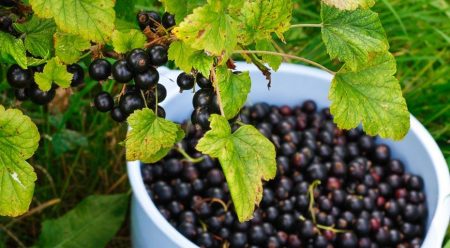
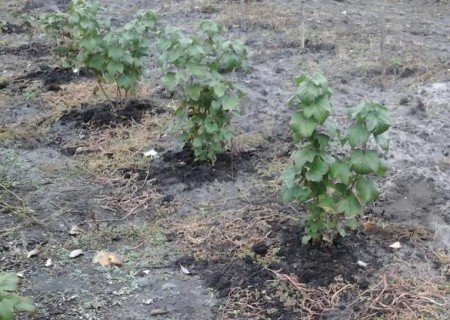
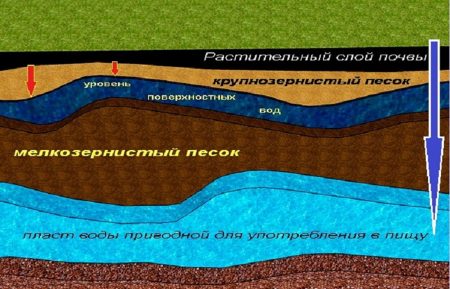
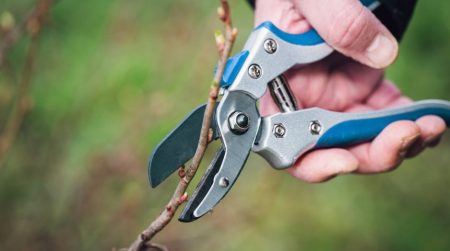
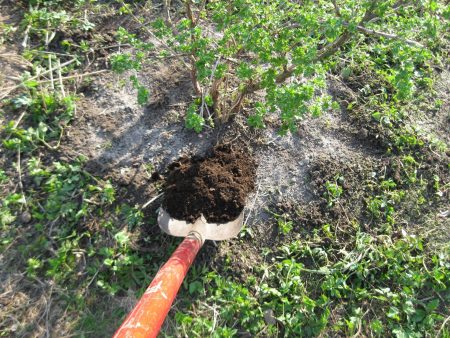
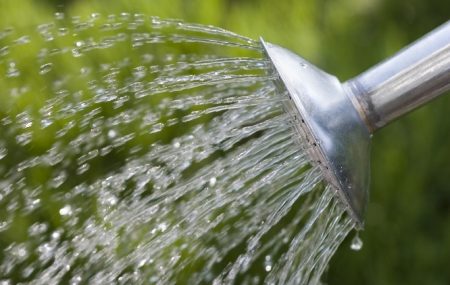
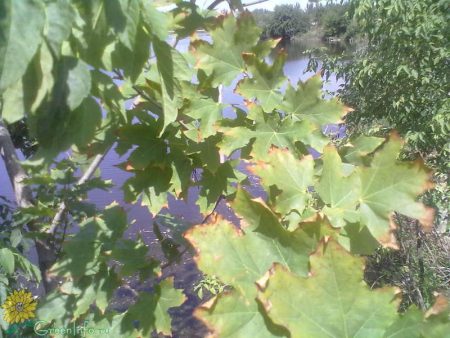
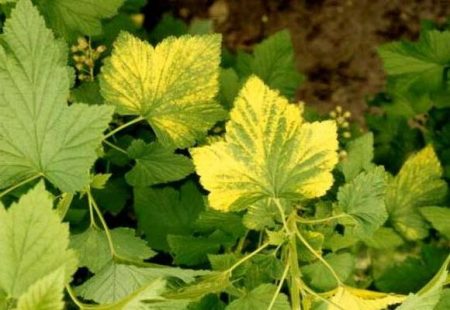
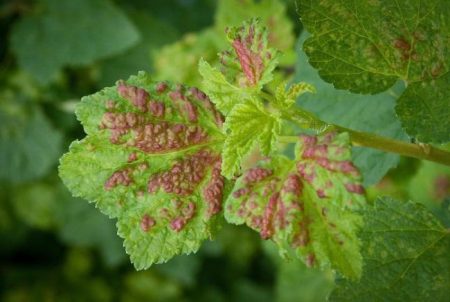
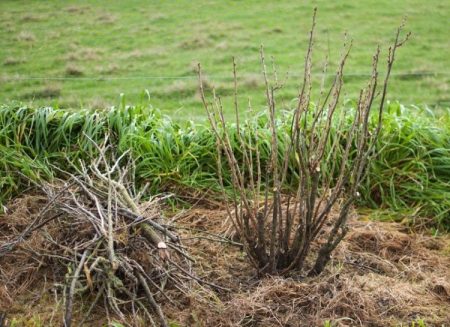

 (3 ratings, average: 4,33 out of 5)
(3 ratings, average: 4,33 out of 5) CUCUMBERS NEVER GET SICK, I'VE BEEN USING ONLY THIS FOR 40 YEARS! I SHARE A SECRET WITH YOU, CUCUMBERS ARE LIKE THE PICTURE!
CUCUMBERS NEVER GET SICK, I'VE BEEN USING ONLY THIS FOR 40 YEARS! I SHARE A SECRET WITH YOU, CUCUMBERS ARE LIKE THE PICTURE! You can dig a bucket of potatoes from each bush. Do you think these are fairy tales? Watch the video
You can dig a bucket of potatoes from each bush. Do you think these are fairy tales? Watch the video
 How our fellow gardeners work in Korea. There is a lot to learn and just fun to watch.
How our fellow gardeners work in Korea. There is a lot to learn and just fun to watch. Eye trainer. The author claims that with daily viewing, vision is restored. They don't charge money for views.
Eye trainer. The author claims that with daily viewing, vision is restored. They don't charge money for views. A 3-ingredient cake recipe in 30 minutes is better than Napoleon. Simple and very tasty.
A 3-ingredient cake recipe in 30 minutes is better than Napoleon. Simple and very tasty. Therapeutic exercises for cervical osteochondrosis. A complete set of exercises.
Therapeutic exercises for cervical osteochondrosis. A complete set of exercises. Which indoor plants match your zodiac sign?
Which indoor plants match your zodiac sign? What about them? Excursion to German dachas.
What about them? Excursion to German dachas.